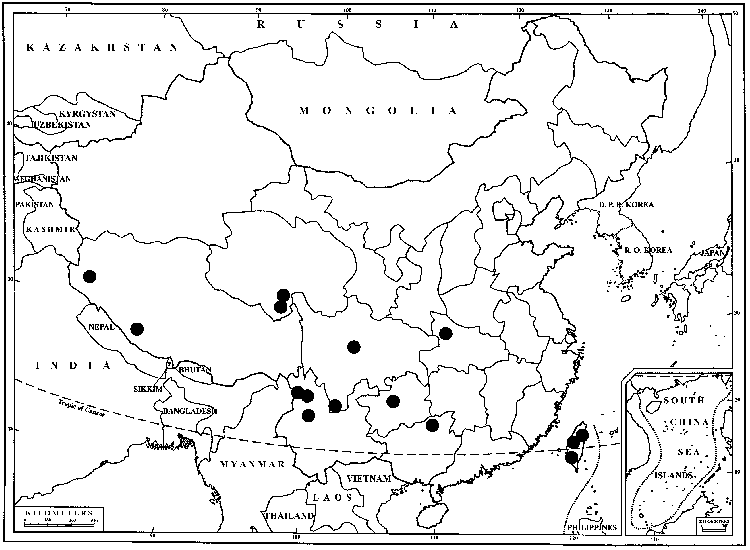Fissidens grandifrons
Muscol. Recent., suppl. 1: 170. 1806,.
Plants to 100 × 3.5 mm wide. Stem usually profusely branched; axillary hyaline nodules present; central strand absent. Leaves in as many as 60 or more pairs, lanceolate, obtuse to rounded, to 3 × 0.5 mm; dorsal lamina narrowed proximally, ending at insertion; vaginant laminae 1/2–2/3 leaf length, acute, equal; margin ± entire to crenulate, elimbate; costa usually difficult to discern, ending a few cells before apex, variable in structure, basically taxifolius-type; lamina cells 1- to 4-stratose at leaf margin, 2- to pluristratose in interior of dorsal and ventral laminae, 1- to 4-stratose in vaginant laminae, smooth, ± plain, quadrate to hexagonal, 7–13 µm long. Sexual condition dioicous (?); perigonia not seen; perichaetia on short axillary branches in medial leaves. Seta 13–19 mm. Capsule theca slightly arcuate, bilaterally symmetric, astomatose, exothecial cells quadrate to oblong, vertical walls thicker than horizontal walls, 1.5–2 mm; peristome taxifolius-type. Spores 20–23 µm.
Habitat: Submerged in rapidly running water in calcareous sites
Distribution

Alta., B.C., Ont., Ala., Alaska, Ariz., Ark., Calif., Idaho, Ill., Ky., Mich., Mo., Mont., N.Y., Oreg., Tenn., Utah, Va., Wash., Wyo., Mexico, Central America, Europe, Asia.
Discussion
Fissidens grandifrons is the only species in the flora area with pluristratose laminal cells. It is a robust aquatic species, usually coarse to the touch. The plants are often brown-black, the result of deposition of organic matter. Reproduction in North America, where sporophytes have never been found, is by vegetative means. According to E. J. Hill (1902), multiplication is by small, radiculose branches that are easily detached in the rapidly running streams. Although the gametophyte of F. grandifrons is specialized to an aquatic habitat (thick, lanceolate leaves and long archegonia; Z. Iwatsuki and T. Suzuki 1982; R. A. Pursell and B. H. Allen 1994), the species has retained a distinctly terrestrial type of sporophyte. The description of the sporophyte given here is based on three specimens: Lai 8699 (NY) and Lin 12831 (NICH) from Taiwan; and Higuchi 20161 (NICH) from Pakistan. A. J. Grout (1943) stated that the operculum is “conic-rostrate, about 1 mm long,” and Iwatsuki and Suzuki reported that the calyptra is “cucullate, about 1.6 mm long, smooth.”
Selected References
None.